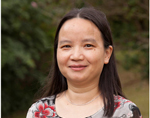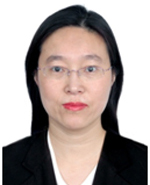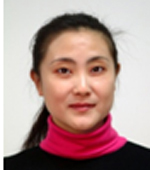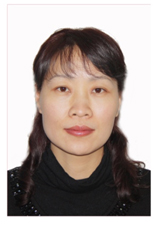Systematic Analysis of Aroma Components in Salvia Sclarea by HS-SPME-GC-MS

摘 要
采用顶空固相微萃取-气相色谱-质谱法(HS-SPME-GC-MS)系统分析了开花期和收获期种植在不同地块(中间地块、南面地块和北面地块)的香紫苏不同部位(根、花、茎、叶)中香气成分的变化。将新鲜的香紫苏全株样品自然晾干,将根、花、茎、叶分离后,各自粉碎后过筛,置于顶空瓶中进行HS-SPME处理,得到的目标物用DB-5MS毛细管色谱柱在程序升温条件下分离,在配有电子轰击离子源的质谱仪中进行检测,以保留时间和定性离子进行定性,以面积归一化法计算各香气成分的相对含量。结果显示:开花期香紫苏根、花、茎、叶中的香气成分分别有8,17,13,12种,收获期的为17,20,16,24种;开花期种植在不同地块的香紫苏根、花、茎、叶中的主要香气成分分别为醇类、酯类、醇类和烃类化合物[64.02%,68.33%,50.20%,37.13%(平均相对含量,下同)],收获期的主要香气成分均为酯类化合物(81.46%,77.80%,84.05%,68.27%),不同生长时期种植在不同地块的香紫苏根、花、茎、叶中共有香气成分分别为芳樟醇、月桂烯和芳樟醇、月桂烯及芳樟醇;邻氨基苯甲酸芳樟酯为开花期南部地块所种植香紫苏根、花和茎中的特有物质,相对含量均在50%以上;收获期的香气成分的种类较开花期的高,主要香气成分均为乙酸芳樟酯。
 气相色谱-质谱法
气相色谱-质谱法  香紫苏
香紫苏  香气成分
香气成分  系统分析
系统分析  HS-SPME
HS-SPME  GC-MS
GC-MS  Salvia sclarea
Salvia sclarea  aroma component
aroma component  systematic analysis
systematic analysis 
Abstract
HS-SPME-GC-MS was used to analyze the changes of aroma components from different parts (flower, stem, leaf and root) of Salvia sclarea planted in different plots (middle plot, south plot and north plot) during the flowering and harvest periods. The whole fresh sample of Salvia sclarea was dried naturally, and the root, flower, stem and leaf were separated. After crushing and sieving, the samples were placed in headspace bottles for HS-SPME treatment. The target compounds were separated on DB-5MS capillary column under temperature programmed conditions, and detected by MS equipped with electron impact ion source. Retention time and qualitative ions were used for qualitation, and the relative contents of aroma components were calculated by area normalization method. The results showed that 8, 17, 13 and 12 kinds of aroma components were found in the root, flower, stem and leaf of Salvia sclarea during the flowering period, and 17, 20, 16 and 24 were found during the harvest period. The main aroma components were alcohols, esters, alcohols and hydrocarbons (64.02%, 68.33%, 50.20% and 37.13%, average relative content, the same below) in the flowering period and all esters (81.46%, 77.80%, 84.05% and 68.27%) during the harvest period from the root, flower, stem and leaf of Salvia sclarea planted in different plots; linalool, myrcene and linalool, myrcene, and linalool were the common aroma components from root, flower, stem and leaf of Salvia Sclarea planted in different plots during different growth periods. Linalyl anthranilate was the peculiar substance of the root, flower and stem of Salvia sclarea planted in the southern plot in the flowering period, with a relative content more than 50%; the types of aroma components in the harvest period were higher than those in the flowering period, and the main aroma component was all linalyl acetate.
中图分类号 O657.63 DOI 10.11973/lhjy-hx202105004
所属栏目 工作简报
基金项目 新疆维吾尔自治区自然基金项目(2018D01A58)
收稿日期 2021/3/8
修改稿日期
网络出版日期
作者单位点击查看
备注王爱霞,高级实验师,硕士,主要从事天然产物的研究与开发工作
引用该论文: WANG Aixia,LUO Haoming,BAI Xuemin,ZHA Qingshan,MA Pingping,CHEN Guotong. Systematic Analysis of Aroma Components in Salvia Sclarea by HS-SPME-GC-MS[J]. Physical Testing and Chemical Analysis part B:Chemical Analysis, 2021, 57(5): 405~412
王爱霞,罗浩铭,白雪敏,查青山,马萍萍,陈国通. 基于顶空固相微萃取-气相色谱-质谱法系统分析香紫苏中的香气成分[J]. 理化检验-化学分册, 2021, 57(5): 405~412
共有人对该论文发表了看法,其中:
人认为该论文很差
人认为该论文较差
人认为该论文一般
人认为该论文较好
人认为该论文很好






参考文献
【1】翟周平.香紫苏[J].植物杂志, 2000(2):14-14.
【2】DZUMAYEV K K, TSIBULSKAYA I A, ZENKEVICH I G, et al. Essential oils of Salvia sclarea L. produced from plants grown in southern Uzbekistan[J]. Journal of Essential Oil Research, 1995,7(6):597-604.
【3】PEŠIC P Ž, BANKOVIC V M. Investigation on the essential oil of cultivated Salvia sclarea L.[J]. Flavour and Fragrance Journal, 2003,18(3):228-230.
【4】樊丛照,朱军,李晓瑾,等.香紫苏花序与种子挥发油提取工艺的研究[J].中国现代中药, 2013,15(5):398-402.
【5】鲁文华,许松林,王燕飞.从香紫苏油中分离提纯芳樟醇和乙酸芳樟酯工艺的研究[J].香料香精化妆品, 2006(5):5-8.
【6】周利萍,朱晨,常海飞,等.蜡含量对香紫苏醇产率的影响[J]. 延安大学学报(自然科学版), 2010,29(2):87-88.
【7】黄杰秋,朱秋劲,茅林春,等.紫苏醇的研究进展[J].贵州农业科学, 2016,44(9):109-113.
【8】白红进,付聘宇,麻妙锋,等.香紫苏醇及其类似物生物转化的研究[J].天然产物研究与开发, 2003,15(5):462-466.
【9】MOTAMEDI H, DARABPOUR E, GHOLIPOUR M, et al. In vitro assay for the anti-brucella activity of medicinal plants against tetracycline-resistant Brucella melitensis[J]. Journal of Zhejiang University SCIENCE B, 2010,11(7):506-511.
【10】陆佳庆,潘仙华,欧文华,等.降龙涎香醚的合成进展[J].香料香精化妆品, 2008(1):23-30.
【11】郝颜峰,杨绍祥,李丽慧,等.降龙涎二醇的合成工艺研究[J].日用化学工业, 2016,46(2):111-113.
【12】李想.香紫苏内酯合成废水的脱酸脱盐过程研究[D].上海:华东理工大学, 2016.
【13】杨薇,周雍进,刘武军,等.构建酿酒酵母工程菌合成香紫苏醇[J].生物工程学报, 2013(8):1185-1192.
【14】张芳.新疆昭苏高寒旱作地区膜上点播香紫苏高产栽培技术[J].农业工程技术, 2016,36(20):62-62.
【2】DZUMAYEV K K, TSIBULSKAYA I A, ZENKEVICH I G, et al. Essential oils of Salvia sclarea L. produced from plants grown in southern Uzbekistan[J]. Journal of Essential Oil Research, 1995,7(6):597-604.
【3】PEŠIC P Ž, BANKOVIC V M. Investigation on the essential oil of cultivated Salvia sclarea L.[J]. Flavour and Fragrance Journal, 2003,18(3):228-230.
【4】樊丛照,朱军,李晓瑾,等.香紫苏花序与种子挥发油提取工艺的研究[J].中国现代中药, 2013,15(5):398-402.
【5】鲁文华,许松林,王燕飞.从香紫苏油中分离提纯芳樟醇和乙酸芳樟酯工艺的研究[J].香料香精化妆品, 2006(5):5-8.
【6】周利萍,朱晨,常海飞,等.蜡含量对香紫苏醇产率的影响[J]. 延安大学学报(自然科学版), 2010,29(2):87-88.
【7】黄杰秋,朱秋劲,茅林春,等.紫苏醇的研究进展[J].贵州农业科学, 2016,44(9):109-113.
【8】白红进,付聘宇,麻妙锋,等.香紫苏醇及其类似物生物转化的研究[J].天然产物研究与开发, 2003,15(5):462-466.
【9】MOTAMEDI H, DARABPOUR E, GHOLIPOUR M, et al. In vitro assay for the anti-brucella activity of medicinal plants against tetracycline-resistant Brucella melitensis[J]. Journal of Zhejiang University SCIENCE B, 2010,11(7):506-511.
【10】陆佳庆,潘仙华,欧文华,等.降龙涎香醚的合成进展[J].香料香精化妆品, 2008(1):23-30.
【11】郝颜峰,杨绍祥,李丽慧,等.降龙涎二醇的合成工艺研究[J].日用化学工业, 2016,46(2):111-113.
【12】李想.香紫苏内酯合成废水的脱酸脱盐过程研究[D].上海:华东理工大学, 2016.
【13】杨薇,周雍进,刘武军,等.构建酿酒酵母工程菌合成香紫苏醇[J].生物工程学报, 2013(8):1185-1192.
【14】张芳.新疆昭苏高寒旱作地区膜上点播香紫苏高产栽培技术[J].农业工程技术, 2016,36(20):62-62.
相关信息
























